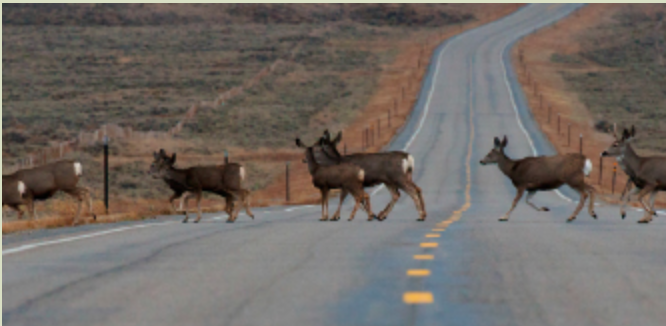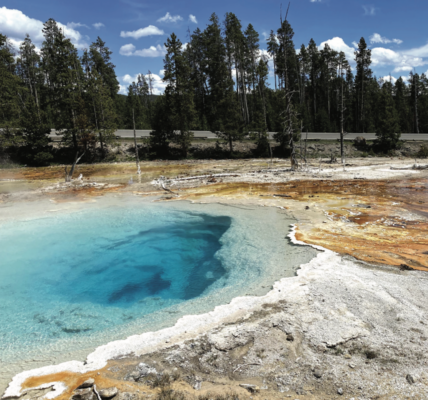By Camille Erickson
Casper Star-Tribune
Via- Wyoming News Exchange
CASPER — Throughout the summer months, an eight-person team has been stewing over how to preserve two key pillars in Wyoming — economic growth and migratory ungulates.
After laboring over the multifarious interests of energy developers, landowners and conservationists, the Migration Corridor Advisory Group announced Monday it had reached some consensus. In a set of recommendations offered to the governor, the team called for changes in state-led management of migration corridors that stretch like veins across Wyoming. If accepted, the ideas could be enshrined into a new executive order.
“I want to thank members of the advisory committee for their efforts,” Gov. Mark Gordon said in a statement Monday. “They accepted the challenge of working collaboratively to identify potential solutions that would both conserve our wildlife and support our economy through multiple uses of public lands. This is what we do in Wyoming. I look forward to reviewing the recommendations and receiving feedback about them.”
As it stands, the Wyoming Game and Fish Department collects data to identify migration corridors where big game like mule deer, pronghorn and elk routinely traverse. In the past few years, the agency announced three corridors: Baggs, Platte Valley and Sublette, also known as the Red Desert-to-Hoback. Two additional corridors are in draft phases, according to Angela Bruce, deputy director of the Game and Fish Department.
In addition to the scientific input culled from the department, the advisory group called for the inclusion of additional “risk and opportunity assessments” from entities outside the wildlife agency.
“The outreach effort should also include analyses and discussions beyond biological and ecological,” Monday’s recommendations stated. “This could be socio-economic information and other data outside of Game and Fish’s knowledge-base.”
Local working groups would be tasked with considering the needs of the large game herds passing through each year alongside the needs of surrounding communities before making decisions, according to the recommendations.
Connie Wilbert, director of the Sierra Club Wyoming Chapter, said the advisory group’s feedback was thoughtful, but she also expressed concern that economic interests could supersede the preservation of wildlife when managing migration corridors.
“It seems like they are moving away from science-based decisions and adding an element of political or special-interest influence,” she said. “I think we have to make sure we maintain the scientific factual information of what these animals are doing on the ground and what they need to live and thrive.”
Meanwhile, energy groups have been calling on the state to consider the economic damage caused when restricting development throughout migration corridors. Pete Obermueller, executive director of the Petroleum Association of Wyoming, commended the advisory group for prioritizing the input of local working groups when designating corridors. But more clarification is needed to ensure energy activity will not be completely restricted in corridors, he said.
“As written, the recommendations appear to tilt heavily toward no surface impact whatsoever — a standard that is not only impossible to achieve but that is not supported by scientific data,” Obermueller said in a statement to the Star-Tribune. “We will continue to work toward a solution that protects the functionality of corridors and protects the people who drive Wyoming’s economy.”
Wyoming currently hosts three designated migration corridors largely concentrated in the southwest of the state. Other ungulate migration corridors exist in Wyoming but have yet to be formally identified by the state.
For centuries, big game herds have trudged across Wyoming, avoiding predators and seeking nourishment. Despite the herds’ ubiquity across Wyoming, scientists have yet to fully grasp the intricacies of the animals’ habits. But technological advancements, including the use of GPS collars, have opened the gates to a more fluent understanding of deer, elk and pronghorn herd movements as the sensitive animals migrate across the state for survival.
In recent years, the population counts for certain migratory animals, like mule deer, have taken a turn for the worse. The ominous signs of potential long-term demise has led to calls by conservationists to enact more stringent regulations within designated corridors to save the iconic animals. The advisory group did call on the governor to continue supporting research on migration corridors.
The Wyoming Outdoor Council also eagerly awaits additional details on the recommendations, according to a statement. But in the meantime, the conservation group underscored the gravity of the situation.
“Wildlife is a part of what defines our communities in Wyoming, and if we lose the means to support our big game herds, we’ve lost something critical about ourselves,” Kristen Gunther, a conservation advocate, said in a statement. “We only get one chance to do this right. If we lose these corridors, that’s it — they’re gone.”







